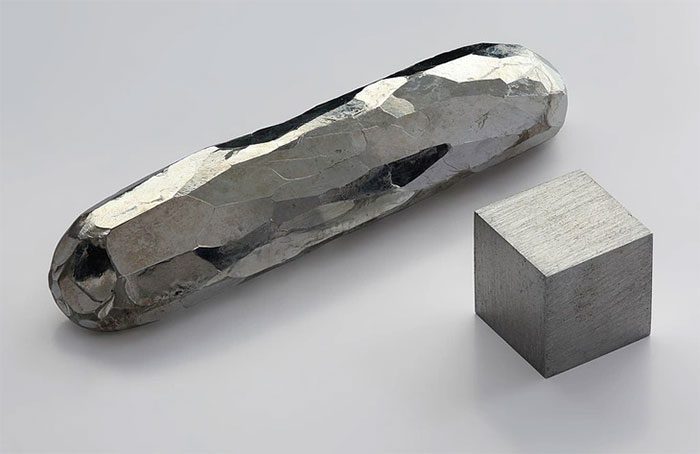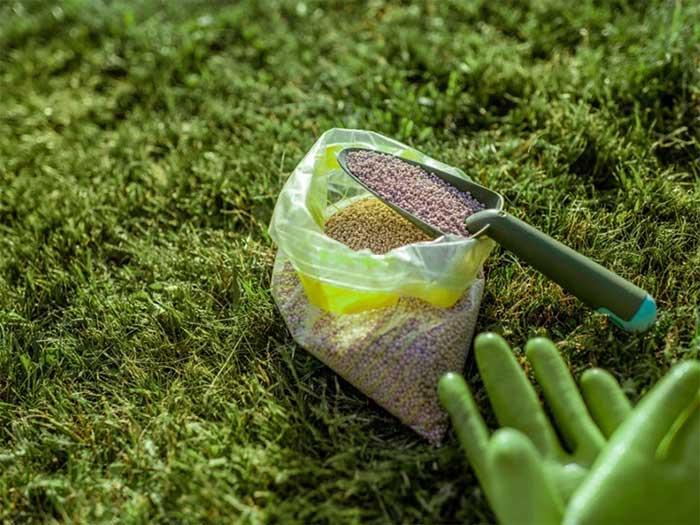Long-term cadmium poisoning can damage kidney function, increase the excretion of low molecular weight proteins in urine, and lead to kidney stones.
Why is Cadmium Found in Food?

A pure 99% cadmium bar – (Image: WIKIMEDIA).
A lecturer from the Department of Chemistry at the University of Natural Sciences (National University of Ho Chi Minh City) stated that cadmium is a heavy metal with a bluish-white color.
Typically, cadmium is not found in its pure form but rather often combines with other elements to form compounds such as cadmium oxide, cadmium sulfide, cadmium chloride, and cadmium sulfate.
In nature, cadmium compounds are often found alongside some phosphorus compounds. This is why cadmium commonly appears in certain types of fertilizers, especially phosphate fertilizers.
Researchers from the ICAR Institute (India) believe that an important raw material for producing phosphorus-containing fertilizers is phosphate rock. This type of rock often contains cadmium compounds.
Over millions of years of sedimentation, cadmium originates from volcanic rocks along with phosphorus from animal bones, forming phosphate minerals.

Some types of phosphate fertilizers often contain high levels of cadmium – (Image: ALAMY).
While phosphorus is an important element that promotes the growth and development of plants, supporting roots, flowers, and fruits, cadmium has no significant effect on plant growth and can adversely affect human health if consumed in large amounts through food.
However, during fertilizer production, many factories face challenges or are not “keen” on completely removing cadmium from natural raw materials, partly due to high costs and partly because it may affect the quality of the fertilizer.
Excessive cadmium in fertilizers can accumulate over time, enter the soil, and then accumulate in crops.
According to chemical experts at Sun Yat-sen University, Guangzhou (China), cadmium residues in agricultural products are also due to cadmium pollution in the soil.
In some areas, mining and metallurgy activities release smoke or wastewater containing cadmium, leading to soil contamination. Soil remediation methods and irrigation management that do not meet standards cannot control cadmium pollution.
Cadmium Harms Kidneys, Bones, and Respiratory System
According to the World Health Organization (WHO), food is the largest source of cadmium accumulation in the human body after smoking. Alarmingly, cadmium can travel “a long way,” from minerals, soil, crops, and then into the human body.
Some foods such as green vegetables, peanuts, soybeans, sunflower seeds, potatoes, and various grains can contain high residues of cadmium if grown in heavily cadmium-contaminated soil or fertilized with cadmium-rich fertilizers. Some surveys indicate that 98% of the average cadmium intake by a person comes from terrestrial food, 1% from seafood, and 1% from drinking water.
Furthermore, according to WHO, the safe limit for cadmium in drinking water is 3µg/l, in air is 5ng/m3, and the acceptable weekly intake is 25µg/kg. Exceeding this threshold can lead to long-term harmful effects due to cadmium accumulation.

Some types of seafood with high cadmium levels – (Image: NEW FOOD MAGAZINE).
According to the Pasteur Institute in Nha Trang, cadmium accumulates mainly in the kidneys over a relatively long period of 10-35 years. Consuming foods with high cadmium content can cause digestive disorders such as nausea, vomiting, abdominal pain, and diarrhea.
Long-term poisoning will damage kidney function, increasing the excretion of low molecular weight proteins in urine and leading to kidney stones.
Cadmium poisoning can also cause calcium metabolism disorders, leading to bone diseases such as weak bones, bone deformities, bone tissue destruction, osteoporosis, and joint pain.
Additionally, cadmium can damage the respiratory system with symptoms like rhinitis, reduced sense of smell, and loss of smell. Inhaling dust containing high levels of cadmium oxide can cause acute pneumonia, which can be fatal.
Long-term occupational exposure to high levels of cadmium results in symptoms such as bronchitis and chronic pneumonia (coughing, difficulty breathing, chest pain, fever) and contributes to the development of lung cancer.


















































